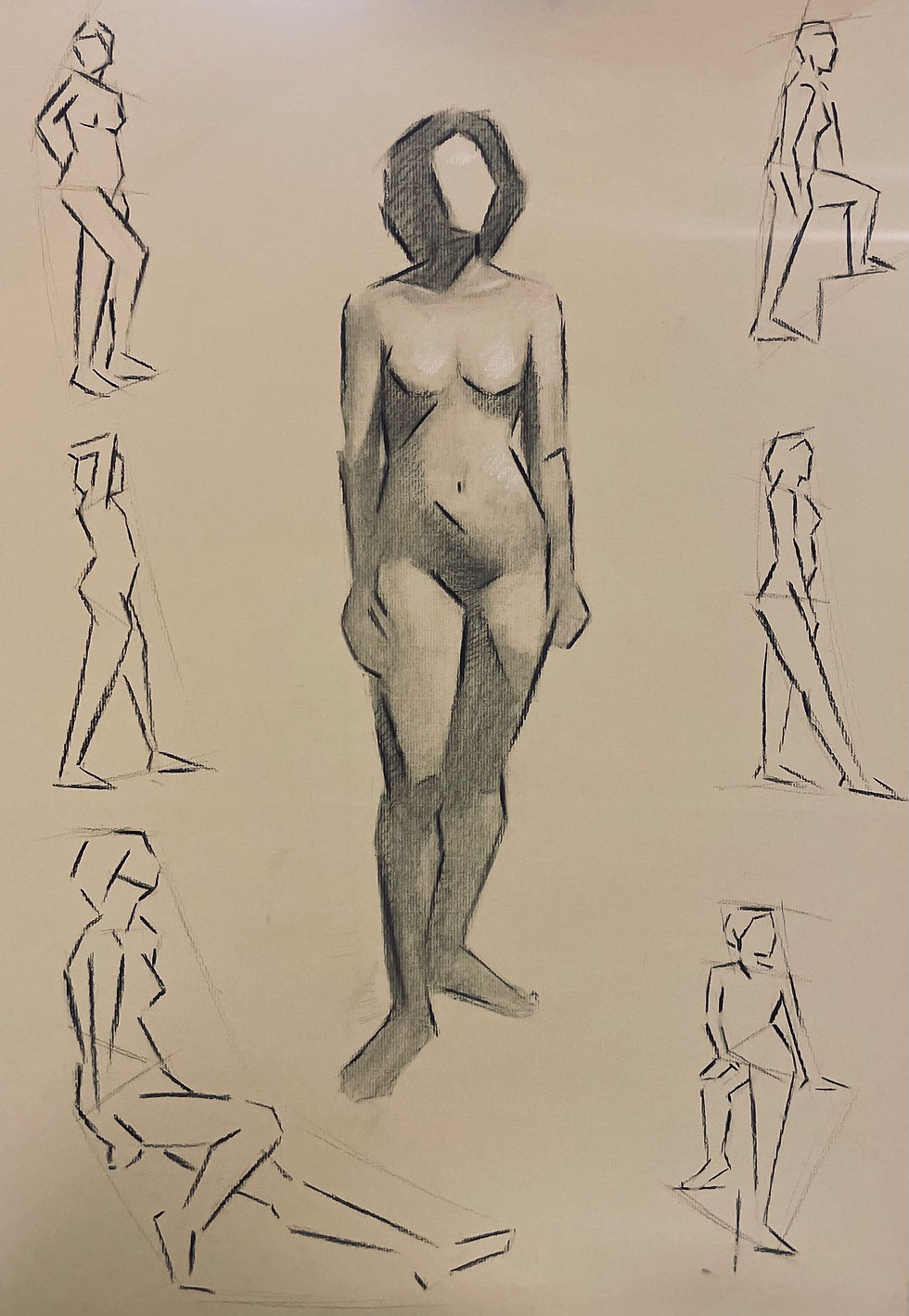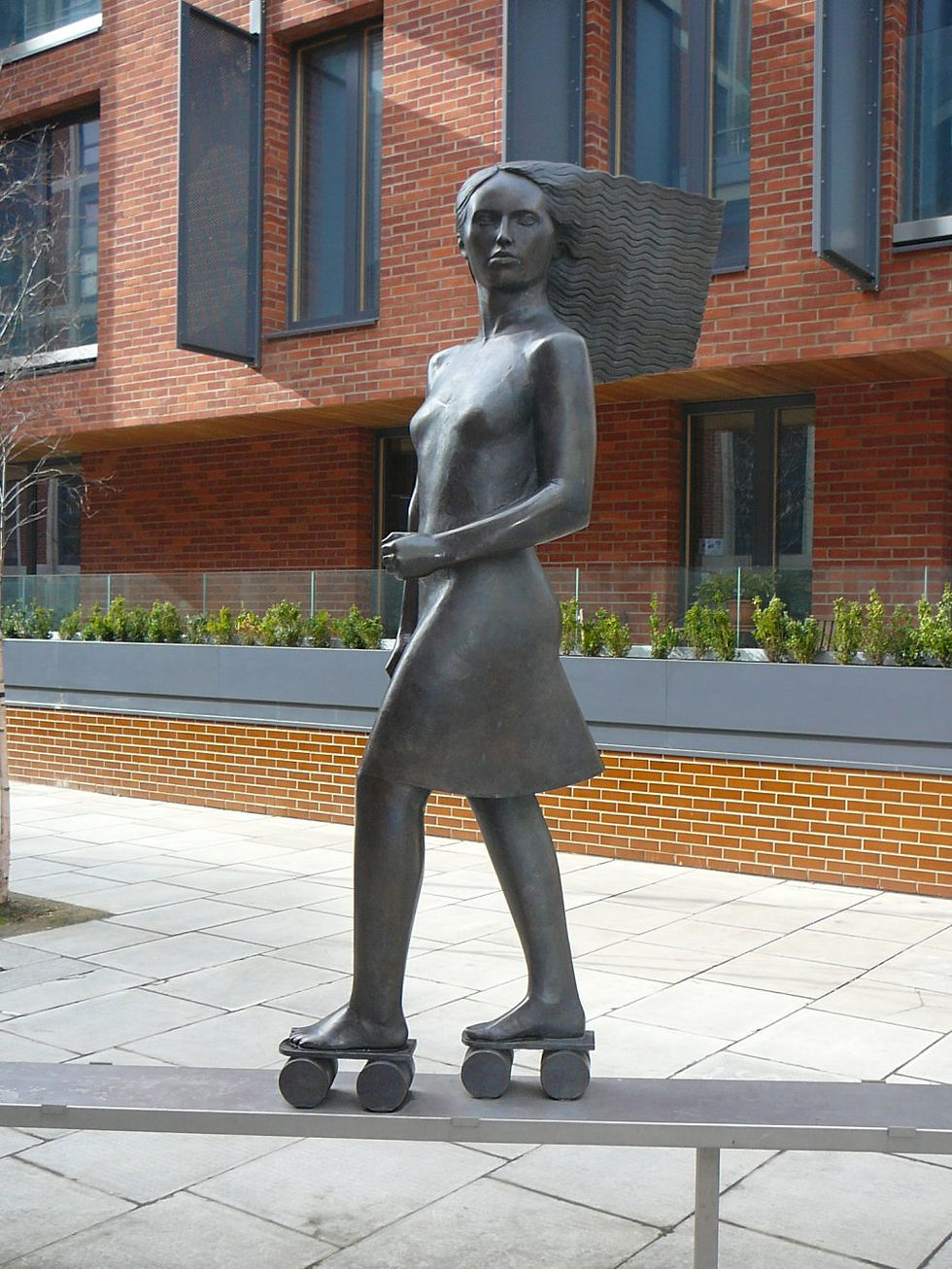How The Arts Shape Our Minds: Neuroscience and my takeaways from 'Your Brain on Art'
- Maddy Gyselynck
- Feb 27
- 7 min read

One of the books that has had a profound impact in the last couple of years on how I view my work, both as an artist and as a teacher, is Your Brain on Art: How the Arts Transform Us by Susan Magsamen and Ivy Ross. The authors write in depth and with passion and enthusiasm about the emerging field of neuroaesthetics. It is all about how engaging with the arts fundamentally alters our brains. It’s a book that speaks directly to the heart of what I believe about the importance of art, in my own life and in the lives of others. What follows is a very surface level summary of some of the ideas in the book that strike me. It is far more authoritative and compelling than any summary I would write though so I strongly encourage you to read it!

Art and the Brain: A Parallel to Exercise
One of the central ideas is that engaging with the arts is as beneficial for the brain as exercise is for the body. Just as we now understand that physical activity doesn’t only improve our fitness but is unequivocally essential for our mental wellbeing, so artistic engagement offers far more than simple intellectual enjoyment. It has specific, measurable effects on the brain: reducing stress, improving cognitive function, fostering connection. This is something we likely all instinctively know, but it is affirming to see the science backing it up. I would absolutely love to see a live scan of my own brain before and after looking at art I love, or better yet, while drawing or painting.

Studies cited in the book show that just 45 minutes of creating art will lower cortisol levels. I see this in myself and my students all the time. Even when we’re wrestling with a tricky charcoal transition or battling in the process of mixing just the right balance of hue and chroma for a tiny part of a painting, the focus in the creating seems to transport us to a calmer, more centred place. External pressures don’t matter. The reward is in the doing.
Painting, Drawing, and Design: Direct Links to Well-Being
One of the most compelling aspects of Your Brain on Art is how it describes and explains the specific benefits of activities like painting, drawing, and design. When we engage in these practices, our brains enter a state of focused attention that is similar to meditation. This is not just about relaxation – it is about rewiring the brain. Creating anything new strengthens neural pathways, encourages neuroplasticity, and exercises problem-solving skills. For those of us who spend hours honing compositions, experimenting with colour theory, or refining brushwork, it is extremely cool to know that these efforts can have such profound cognitive benefits. We get the same effects from engaging in music practice, DJing, sewing, wood carving, writing, reading poetry, dancing.

Another fascinating example from the book involves observational drawing, something that forms the backbone of my classical training. Drawing from life requires not just looking, but seeing, and therefore a deep engagement with what is there in front of you. It’s unlike any other form of creativity that I can think of. This practice not only hones technical skills but also sharpens your brain’s ability to process visual information, improving memory and spatial reasoning. These benefits extend beyond the canvas. I can testify myself how enriched I feel over the last few years, since studying figurative art, changing careers and creating artwork based primarily on what I can see in front of me.
The book details how the process of designing objects - whether it’s furniture, clothing, or even a layout for a garden - stimulates problem-solving and decision-making areas of the brain. These activities blend creativity with logic, fostering a unique kind of versatile mental agility. I encourage everyone to try it.
Music, Dementia, and the Broader Impact of the Arts
One of the most moving parts of Your Brain on Art explores the impact of music on individuals with dementia. Music – ‘the shorthand of emotion’ (Tolstoy) – has been shown to reduce anxiety, improve mood, and even rekindle a sense of identity in those with Alzheimer’s disease. The book shares the story of a care home where patients who had been largely unresponsive were able to sing, smile, and engage when music from their youth was played. This simple yet profound intervention illustrates the power of the arts to reach people on a level that traditional therapies often cannot.

What is fascinating is that science does not yet fully understand all the precise mechanisms behind these effects. It’s known, however, that music activates regions of the brain linked to emotion and memory, such as the amygdala and hippocampus, in ways that bypass consciousness and are not directly affected by cognitive decline. Rhythm and melody tap into fundamental neural circuits that remain intact even in advanced stages of dementia. Whatever the exact reasons, the results speak for themselves, offering a glimpse into how deeply the arts are intertwined with our humanity. I'm now reading Your Brain on Music by Daniel Levitin to learn more about this!
Art in Hospitals: Healing Beyond the Physical

Another case study in the book highlights a programme where hospital patients were encouraged to create art during their recovery. The results were astonishing: patients reported less pain, greater optimism, and faster healing times. Again, the precise mechanisms are not fully understood yet, but creating art is known to engage the parasympathetic nervous system, helps the body rest and heal. Furthermore, the focus and mental agility involved in making art may divert attention from pain and foster a sense of control in an otherwise disempowering environment. Another theory posits that the sensory and emotional experience of creating art triggers the release of endorphins, our body’s natural painkillers. Whatever the explanation, the evidence underscores how powerful and multifaceted the effects of art can be.
Awe, Architecture, and Universal Experiences
Another intriguing aspect of the book delves into architecture and the concept of awe - a profound emotional response that can be found across cultures. Awe-inspiring spaces, from ancient cathedrals to modern museums, have a unique ability to move us, fostering feelings of connection, wonder, and even humility. These environments do not inspire us by accident; rather they are the result of active creative choices by architects and designers. It’s as if humans have always intrinsically understood the mental and emotional benefits of thoughtful, beautiful design.
How This Shapes My Approach to Art and Teaching

Reading Your Brain on Art has reinforced why I’m so passionate about making and teaching art. It is not just about creating beautiful things; it is about creating moments of connection, exploration, and growth. Whether I’m guiding a student through their first attempts at life drawing or working on a series of alla prima oil paintings, I see art as a means to enrich lives in ways that go far beyond the aesthetic.
Furthermore, I try to live the philosophy of embracing the process rather than fixating on the outcome. This mirrors the book’s emphasis on the transformative power of making art. The act of putting charcoal to paper or brush to canvas is inherently valuable - a way to focus the mind, calm the spirit, and engage the senses. The benefits lie in the doing itself, not in chasing a specific goal or end product. It is a mindset that challenges our often goal-oriented culture and celebrates the joy and growth found in the journey.
The Broader Implications

Beyond the personal benefits, Your Brain on Art also explores how the arts can foster social connection and community. This idea feels particularly timely. Exhibitions, workshops, and even casual conversations about art all provide opportunities. In my own work, I’ve found that the story behind a painting - why I chose the subject, how I approached the composition, what challenges I faced - can be just as compelling for people as the artwork itself. These stories invite people into my process, making the art more accessible and, I hope, more meaningful.
A Call to Action
As we begin to understand more about how the arts affect our brains, it is clear that they are not just a cultural nicety but a vital part of human well-being. Whether you’re an artist, an enthusiast, or simply someone curious about the creative process, I highly recommend Your Brain on Art. It is a book full of really rigorous science and compelling case studies. It is a book that inspired me to see the arts in a new light, and I hope perhaps even encourage you to pick up a paintbrush, visit a gallery, or put on a favourite piece of music. The benefits - to your brain, your spirit, and your community - are well worth it. The world needs more people living rich, vibrant lives.

As we’ve seen, art isn’t just something we view - it’s something that actively engages our minds and shapes our experience. If you’re feeling inspired to explore how art can stir your own thoughts and emotions, I would love for you to take a moment to visit my online shop and gallery. I’m always open for conversations about commissions too if a bespoke piece is something you’re curious about. Each piece I make has been crafted with thoughtfulness and intention, and I’d love for you to discover something that resonates with you.
Feel free to take a look - something might catch your eye. I’d also love to hear what you think if you’ve read this book, or something else here lands with you.
Other reading and sources!




Comments